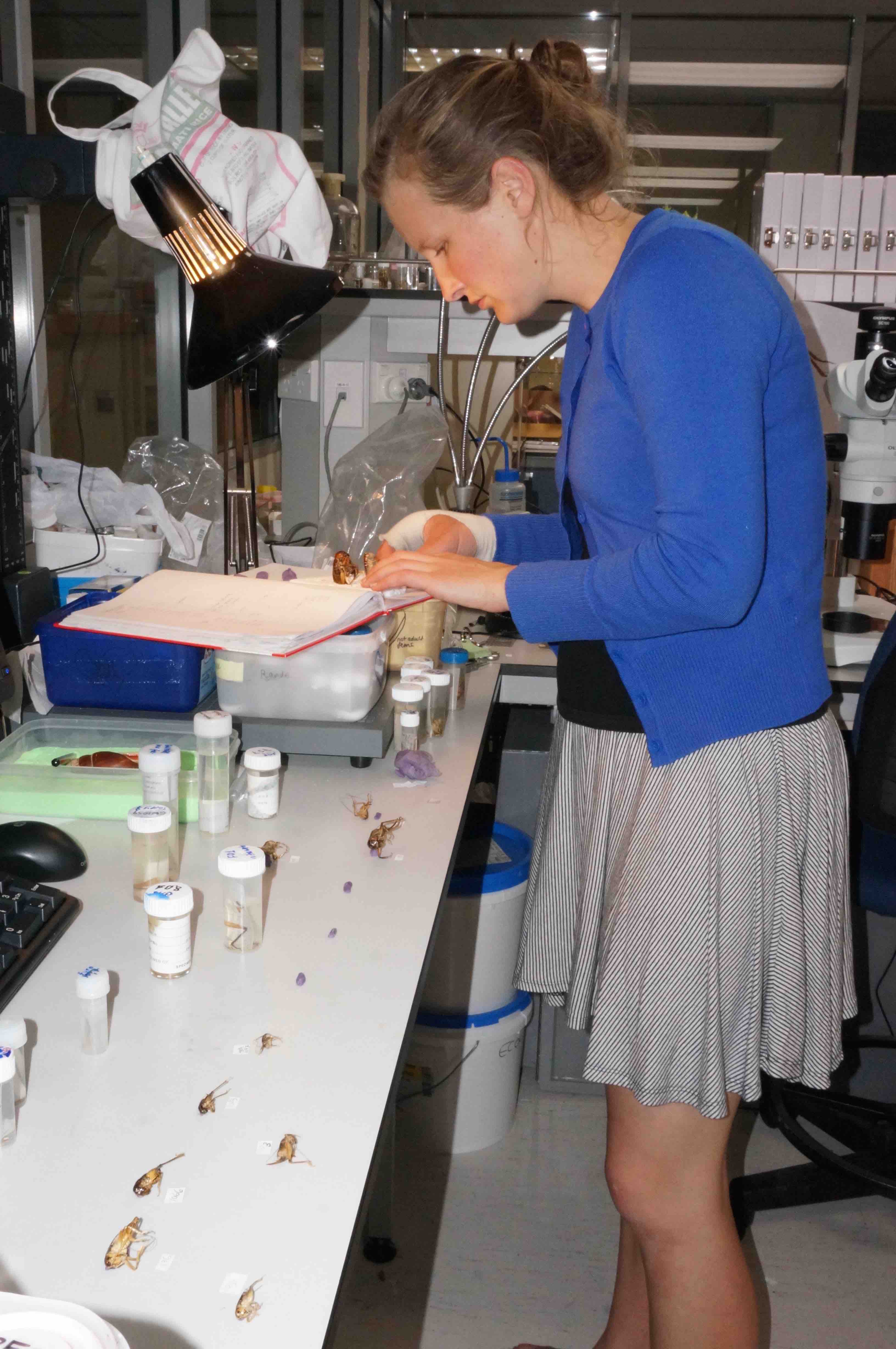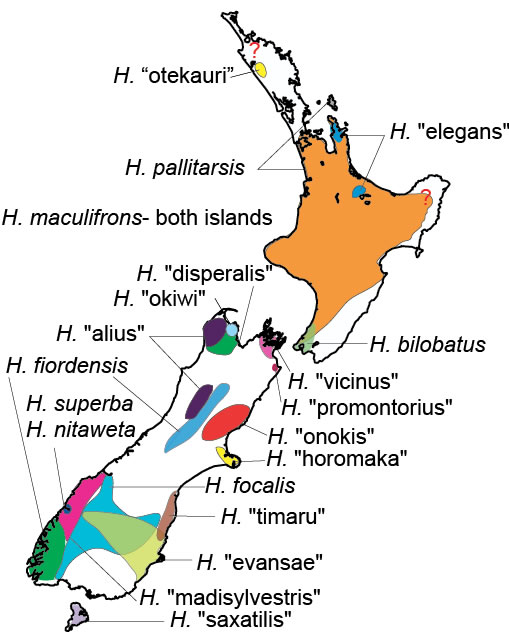The genus Hemiandrus (Insecta: Orthoptera: Anostostomatidae) comprises approximately 40 New Zealand species of ground weta. Only 9 species have been described and most of the others have only tag names. Most species are have restricted ranges (Fig. 1) and there are far more species in South Island than North Island. Ground weta are related to tree, giant and tusked weta, but are far more speciose with tree weta having only 7 species, giant weta 11 species and tusked weta 3 species. My research investigates why there are so many species of ground weta in New Zealand.
A genus may consist of a high number of species due to increased speciation rates, decreased extinction rates or a combination of the two. Some traits of ground weta may increase speciation rates, such as those that are subject to strong sexual selection e.g. mating signals, anatomy associated with reproduction. Some traits may also decrease extinction rates, such as those that increase survival rates in unpredictable environments e.g. burrowing behaviour, maternal care of young. Furthermore, some regions may have a higher number of species due to features of the land itself e.g. available land area, age, habitat heterogeneity, climate. Using a combination of morphometric, acoustic and genetic techniques I am investigating what has driven the high level of species diversity in this genus.
I am also interested in resolving ground weta taxonomy and evolutionary relationships. Part of my research has been looking at a widespread species Hemiandrus maculifrons, which is found all over both North and South Islands. My results show that H. maculifrons is a cryptic species complex consisting of at least two genetically and morphologically distinctive species with both species being found on both islands. I am currently investigating the nature of interactions between sympatric species within this complex.
Publication:
Taylor Smith, B. L., Morgan-Richards, M., & Trewick, S. A. (2013). New Zealand ground wētā (Anostostomatidae: Hemiandrus): descriptions of two species with notes on their biology. New Zealand Journal of Zoology, 40(4), 314-329.
|


Figure 1: The distribution of some New Zealand ground weta. Adapted from Trewick and Bland (2011). |